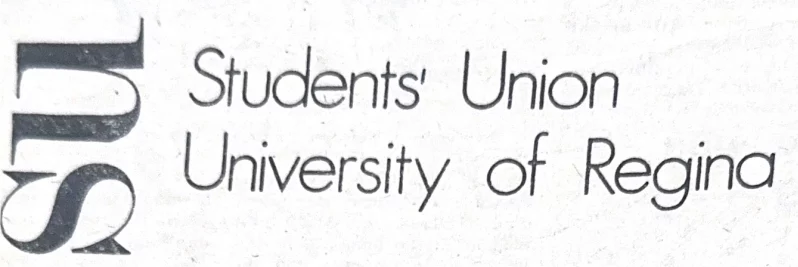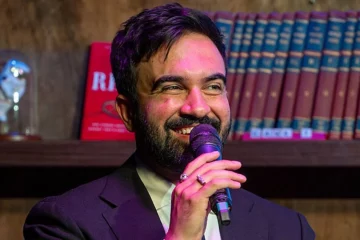The Carillon’s relationship with the URSU has been rocky over the years to say the least
Recently, several articles have been written about the University of Regina Students’ Union (URSU) in the Carillon; whether it be their special general meeting (SGM) and their questionable dissolution, their mysterious car, their ever-mounting lawsuits and court cases, or other alleged controversies.
Over the course of the last few months, the Carillon writers have been critical of URSU but have tried to show URSU’s perspective whenever the opportunity arose. This was evident when we published the article “Does the students’ union need a car?” and later published a follow-up article “Students’ union provides more info amid car controversy,” featuring a response from the then URSU president, Hamza Rehan.
We recently published articles such as the op-ed piece titled “Who should work at the student union?,” and more revolving around their eviction. In these articles, we attempted to clarify things with URSU, though these efforts were met with no response.
You might ask, was this relationship always strained? Did the Carillon ever publish any positive coverage about URSU? This tension, not to anyone’s surprise, is far from new. This article demonstrates that the Carillon has been engaged in an ongoing turf with URSU for over 60 years. In this piece, we will examine the history of the Carillon’s relationship with URSU from its inception to the present day through archival research and previously published articles.
Always presenting both sides
URSU was previously known as Student Representative Council (SRC) when the University of Regina (UofR) was still part of the University of Saskatchewan (UofS). In 1964, SRC president Simon de Jong published an article in the Carillon, criticizing the paper’s reporting.
De Jong wrote that “personal opinion and feelings should be expressed in editorials and not hide behind a flimsy disguise of news reporting.” He added that much of the Carillon’s coverage was inaccurate and misrepresented.
In response, a Carillon news writer and editorial writer Ron Thompson wrote, “It is not the purpose of the paper to gloss over the doings of the SRC. So as long as, in my opinion, they are failing the students whom they are supposed to represent or are too involved in nothing.”
By 1967, students raised similar concerns about the SRC, as the present-day students did about URSU. The Carillon staff published an article about the SRC’s annual meeting, reporting the alarmingly low turnout.
“There wasn’t a quorum present because, plain and simply, the average student doesn’t give a damn about the Students’ Union,” the Carillon wrote.
Students’ Union’s then president Ralph Smith answered the Carillon’s questions in an interview about the annual meeting. “The Students’ Representative Council has failed to communicate to the students the importance of this meeting,” said Smith. Smith acknowledged that the SRC had let students down in the past and pledged to do better moving forward.
Working in cooperation with URSU
In 1973, the Carillon published an article that stated that the university’s administration had been interfering with and undermining the students’ union.
The Podium, a column in the Regina Leader Post, alleged that the students’ union failed to represent students and criticized its collaboration with UofR athletics. It was later revealed, the column was funded by the UofR and the Carillon argued that it contradicted the claims made by the then UofR president Dr. John H. Archer, that there would be no interference in the students’ union’s affairs.
“Now, the Podium has taken up the attack against the students’ union, by taking a position concerning the students’ referendum on athletics,” the Carillon wrote. The writers further contended that the UofR administration did not like the editorial policies of the Carillon and by attacking the students’ union, they could control freedom of the press.
Attempts to work together despite challenges
In 1988, the Carillon news writer Evan Leeson published an article about URSU, titled “SU handbook fiasco costs $16,000.” Leeson’s article drew attention to the fact that URSU was facing financial troubles demanding answers to the possible causes.
“This year’s student handbook project was confident that, for the first time in years, it would make money, rather than lose money for the student union,” wrote Leeson.
Leeson also interviewed the handbook’s editor Jo Morris, who said, “It’s unfortunate that after putting together a good product that it has to be associated with an ugly situation like this.”
Then URSU president Richard Maddia told Leeson he was not involved in making the handbook but accepted responsibility for the monetary loss. Leeson reported that the issues may have revolved around URSU’s lack of advertising revenue.
Leeson additionally noted that even though URSU accepted responsibility, the advertising coordinator Daryle Gessner denied any responsibility for the loss of revenue.
Throughout the 1990s and early 2000s, the relationship remained similar with respect to highlighting financial mismanagements but also allowing URSU to present its perspective.
In Nov 2001, Leisha Grebinski wrote an article about how student fees were being held by financial services. This was due to URSU’s refusal to pay operating costs for the multipurpose room in the Dr. William Riddell Centre. In the article, Grebinski quoted URSU president Mike Farmer, who said he did not feel solely responsible for the fees.
It is not the purpose of the paper to gloss over the doings of the Student Council.” – Ron Thompson, Carillon writer, 1964
A dramatic shift in the tides and financial blunders
It is difficult to see where this shift began. But at some point, the Carillon and URSU’s relationship became increasingly stiff.
The first very apparent instance is when John Cameron, the Carillon Editor-in-Chief (EIC) in the early 2010s, published several articles revolving around URSU’s finances. In one such article titled “Nickels, dimes, and Meyers Norris Penny,” Cameron details URSU’s 2010-2011 audit.
“Unsurprisingly, the audit which has to be accepted by the board and approved by the membership at URSU’s annual general meeting showed nothing to prevent Meyers Norris Penny from declaring that the organization’s financial statements ‘present fairly in all respects’ as it has for the last several years,” wrote Cameron.
Cameron noted that the company that conducted the audit stressed concerns with URSU’s investments. “As of April 2011, the students’ union has $464,000 in short-term investments and $722,000 in long-term – meaning they’ve got almost $1.2 million in things like mutual funds and other equities,” wrote Cameron. He noted that the firm found this to be unusual.
URSU’s lack of responsiveness
The issues with finances have continued until the present. In 2024, the former Carillon EIC Mikayla Tallon published an article questioning URSU’s financial transparency. Despite multiple requests for comment, Tallon’s inquiries were denied and met with hostility by former URSU general manager, Aoun Muhammad.
In an email to the Carillon, Muhammad wrote, “As long as your questions are stupid, irrelevant, and loaded, I won’t even respond to your emails.”
The relationship since then has gone increasingly sour. When the Carillon sought to gain clarity on the URSU dissolution, the request went unanswered.
Decades of Scrutiny
For over 60 years, the Carillon and URSU have shared a complex relationship shaped by accountability and tension. What began in the 1960s as debates over fair reporting culminated into decades of scrutiny over finances, leadership, and transparency. Despite the changes and challenges in its relationship with the union, the Carillon has tried to hold the union accountable for their actions and answerable to the students since its inception.
Now that the union’s end seems to be nearing and the formation of a new student representative body is likely, the Carillon strives to keep advocating for students’ rights and holding those in power accountable.










